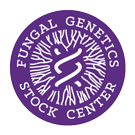Strain: Neurospora crassa
FGSC #4402
Reporting Genes: wc-1
Species: crassa
Allele: MK1
Alternate Strain Number: R122
Mutagen: UV
Depositor: VEAR
Linkage Group: VIIR
Mating Type: a
Genetic Background: SL
Opposite Mating Type: 4401
ref1: NNL 30:11-12, https://doi.org/10.4148/1941-4765.1622
ref2: https://doi.org/10.1128/jb.159.2.757-761.1984
Genes
